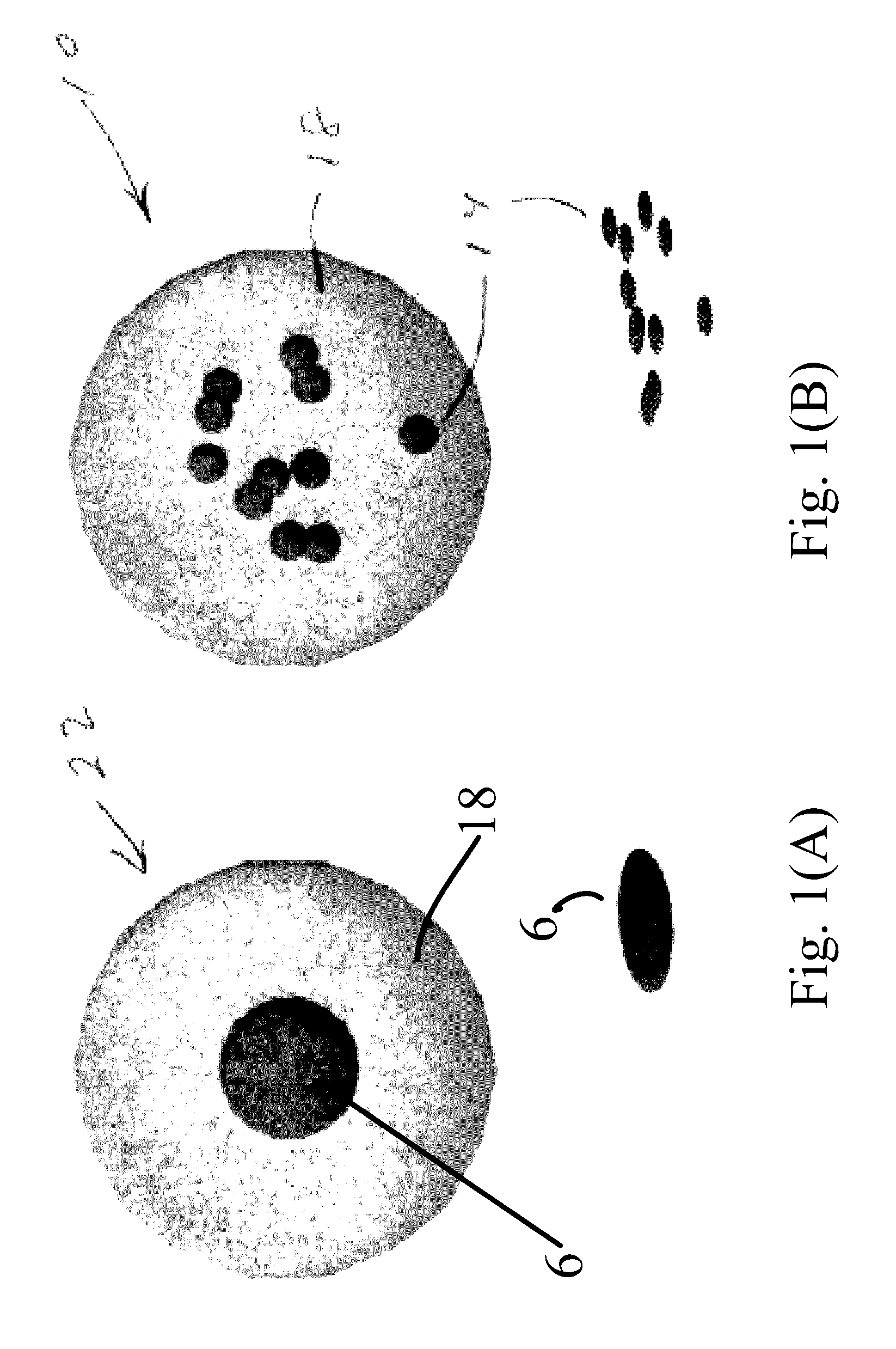Multicore Magnetic Particles
a magnetic particle and multi-core technology, applied in nanotechnology, nanomedicine, nanotechnology, etc., can solve the problems of large number of particles above the critical superparamagnetic diameter, the particle cannot be individually sized, and the particle cannot be sized as a whol
- Summary
- Abstract
- Description
- Claims
- Application Information
AI Technical Summary
Benefits of technology
Problems solved by technology
Method used
Image
Examples
Embodiment Construction
[0024]In brief overview and referring FIG. 1(A), a prior art single core nanoparticle 22 is shown, in which a single magnetic core 6 is located in a matrix 18. FIG. 1B, the present invention relates to a novel multicore nanoparticle 10 for use in magnetic hyperthermia therapy. In one embodiment, the multicore nanoparticle 10 of the present invention includes multiple superparamagnetic core particles (also referred to as cores) 14, based on well-tolerated iron oxide, in a non-magnetic matrix 18. Rather than core-shell interfacial exchange interactions, collective exchange and dipolar coupling between individual iron oxide cores increases the effective overall energy barrier, thereby increasing their effective volume. The proximity of the collection of smaller cores mimics a larger volume particle with a size close to the transition between single-domain and multi-domain particles. Further, with the nanoparticle cores being separated by a non-magnetic matrix, the matrix can be selecte...
PUM
| Property | Measurement | Unit |
|---|---|---|
| magnetic | aaaaa | aaaaa |
| superparmagnetic | aaaaa | aaaaa |
| anisotropy energy barrier | aaaaa | aaaaa |
Abstract
Description
Claims
Application Information
 Login to View More
Login to View More - R&D
- Intellectual Property
- Life Sciences
- Materials
- Tech Scout
- Unparalleled Data Quality
- Higher Quality Content
- 60% Fewer Hallucinations
Browse by: Latest US Patents, China's latest patents, Technical Efficacy Thesaurus, Application Domain, Technology Topic, Popular Technical Reports.
© 2025 PatSnap. All rights reserved.Legal|Privacy policy|Modern Slavery Act Transparency Statement|Sitemap|About US| Contact US: help@patsnap.com



